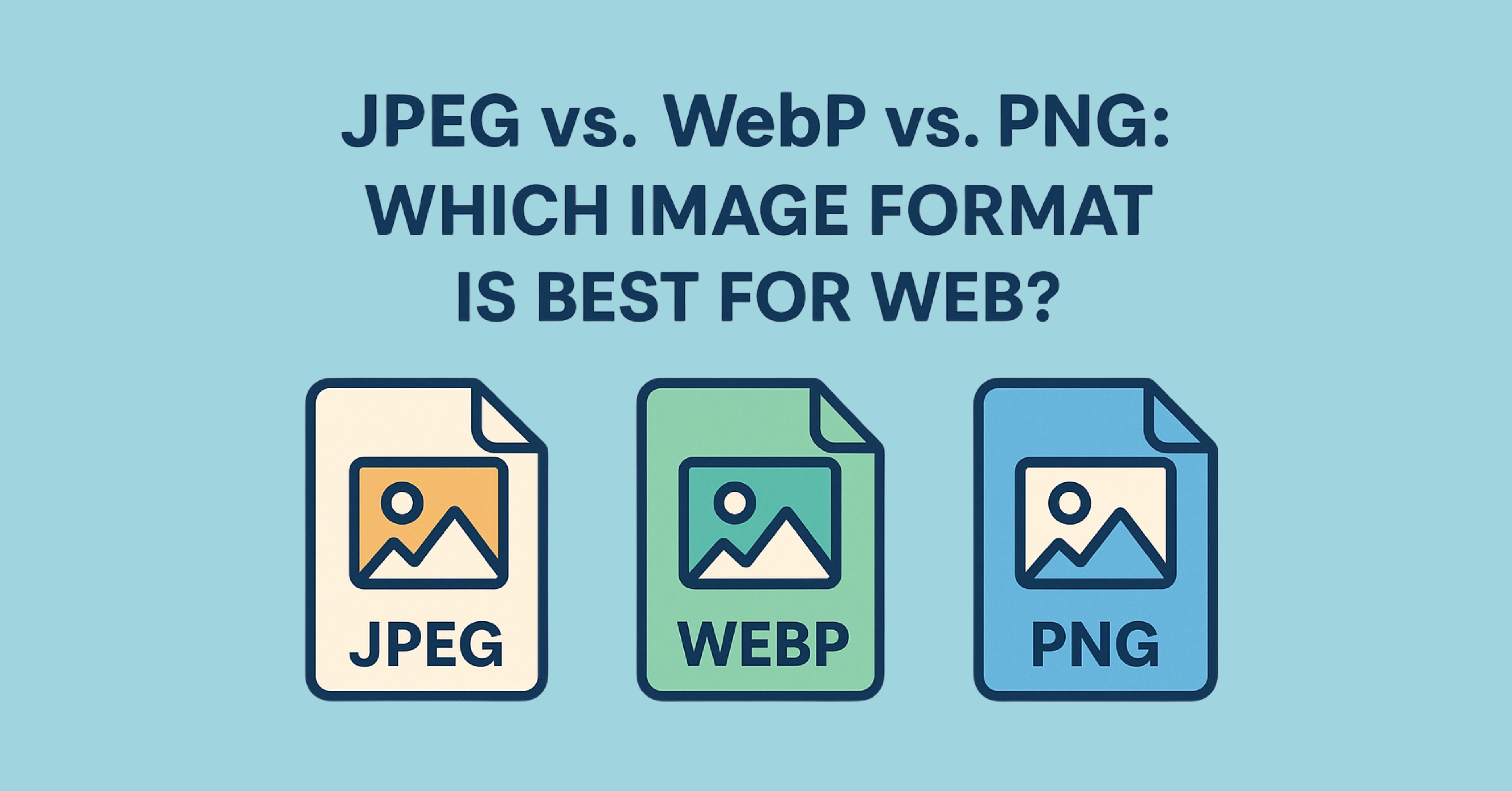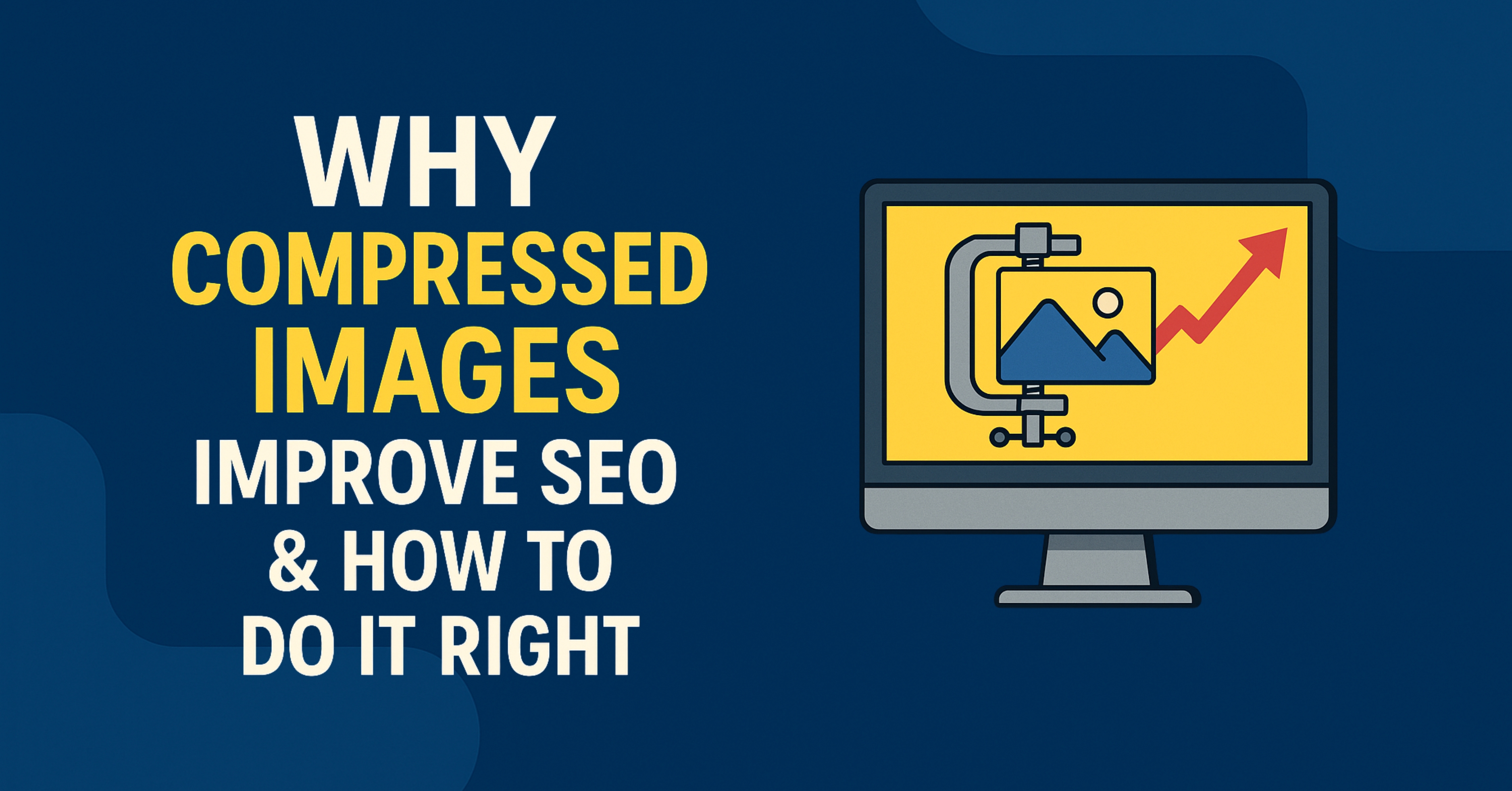JPEG vs. WebP vs. PNG: Which Image Format is Best for Web?

Choosing the right image format can significantly impact your website's performance, user experience, and SEO rankings. With JPEG, WebP, and PNG being the three most popular formats for web images, how do you decide which one to use?
In this comprehensive guide, we'll compare these formats across multiple factors including file size, quality, transparency support, and browser compatibility to help you make informed decisions for your web projects.
Quick Answer: WebP offers the best balance of quality and compression for most web images. Use PNG when you need transparency, and fall back to JPEG for maximum compatibility with older browsers.
Understanding Image Formats: A Brief Overview
Before comparing the formats, let's understand what each one was designed for:
JPEG (Joint Photographic Experts Group)
- Created in 1992 for photographic images
- Uses lossy compression (reduces file size by discarding some data)
- No transparency support
- Best for photographs and complex images
PNG (Portable Network Graphics)
- Developed in 1996 as a GIF replacement
- Uses lossless compression (no quality loss)
- Supports transparency (alpha channel)
- Best for graphics, logos, and images requiring transparency
WebP (Web Picture Format)
- Developed by Google in 2010 for web optimization
- Offers both lossy and lossless compression
- Supports transparency (alpha channel)
- Provides superior compression to both JPEG and PNG
Key Differences Between JPEG, WebP and PNG
Technical Comparison Table
| Feature | JPEG | WebP | PNG |
|---|---|---|---|
| Compression Type | Lossy | Lossy/Lossless | Lossless |
| Transparency | No | Yes (alpha channel) | Yes (alpha channel) |
| Animation | No | Yes | No (use APNG) |
| Color Depth | 24-bit | 24-bit/32-bit | 24-bit/32-bit |
| Best For | Photographs | All web images | Graphics with transparency |
| Browser Support | Universal | Modern browsers (IE not supported) | Universal |
| File Size | Medium | Smallest | Largest |
File Size Comparison: How Much Can You Save?
The primary advantage of WebP is its superior compression. Here's a typical comparison for the same image in different formats:
File Size Comparison (Same Image Quality)
| Format | File Size | Reduction vs JPEG |
|---|---|---|
| JPEG (Quality 80) | 120 KB | - |
| WebP (Lossy, Quality 80) | 80 KB | 33% smaller |
| PNG-24 | 350 KB | 192% larger |
| WebP (Lossless) | 150 KB | 25% larger |
As you can see, WebP's lossy compression provides significant file size savings compared to JPEG at similar quality levels. The savings are even more dramatic when comparing to PNG.

Visual comparison showing file size differences between formats
Quality Comparison: Visual Differences
While file size is important, visual quality is often the deciding factor. Here's how the formats compare:
✅ JPEG Quality Characteristics
- Excellent for photographs with smooth gradients
- Noticeable artifacts at high compression
- No transparency support
- Can produce "blocking" artifacts in solid color areas
❌ JPEG Limitations
- Not suitable for graphics with text or sharp edges
- No transparency support
- Artifacts become noticeable when re-saving
✅ WebP Quality Characteristics
- Comparable or better quality than JPEG at same file size
- Better preservation of sharp edges than JPEG
- Supports transparency like PNG
- Less noticeable artifacts than JPEG
❌ WebP Limitations
- Not supported by Internet Explorer
- Lossless mode produces larger files than PNG
- Requires more processing power to encode
✅ PNG Quality Characteristics
- Perfect lossless quality
- Excellent for graphics with text and sharp edges
- Full alpha transparency support
- No generation loss when re-saving
❌ PNG Limitations
- Large file sizes for photographs
- No progressive loading like JPEG
- No built-in animation support (requires APNG)
Browser Support and Compatibility
While WebP offers superior compression, browser compatibility is an important consideration:
Current Browser Support (2024)
| Browser | JPEG | WebP | PNG |
|---|---|---|---|
| Chrome | ✅ Full support | ✅ Full support | ✅ Full support |
| Firefox | ✅ Full support | ✅ Full support | ✅ Full support |
| Safari | ✅ Full support | ✅ Full support (since 14.0) | ✅ Full support |
| Edge | ✅ Full support | ✅ Full support | ✅ Full support |
| Internet Explorer | ✅ Full support | ❌ No support | ✅ Full support |
| Mobile Browsers | ✅ Full support | ✅ Full support | ✅ Full support |
As of 2024, WebP is supported by all modern browsers. The only significant holdout is Internet Explorer, which Microsoft officially discontinued in 2022.
Implementation Tip: You can serve WebP to supporting browsers while falling back to JPEG/PNG for others using the HTML <picture> element or content negotiation on your server.
Which Format Should You Use? Decision Guide
Use this flowchart to determine the best format for your specific needs:
Does the image require transparency?
If yes → Use WebP (lossless) or PNG
If no → Continue to question 2
Is the image a photograph or has complex colors?
If yes → Use WebP (lossy) or JPEG
If no → Continue to question 3
Does the image contain text or sharp edges?
If yes → Use WebP (lossless) or PNG
If no → Use WebP (lossy) or JPEG
How to Convert Between Formats
Converting to WebP
You can convert images to WebP using:
- Online tools: Use Squoosh.app
- Command line: Use cwebp (from Google's WebP tools)
- Photo editors: Photoshop, GIMP (with plugin), or Affinity Photo
- Automated: Build tools like Webpack or Gulp with appropriate plugins
Optimizing JPEGs
To get the best JPEG quality/size ratio:
- Use quality setting between 70-85 (higher isn't always better)
- Enable progressive loading for larger images
- Use chroma subsampling (4:2:0) for photographs
- Strip metadata (EXIF, ICC profiles) unless needed
Optimizing PNGs
To reduce PNG file sizes:
- Use PNG-8 instead of PNG-24 when possible (limited to 256 colors)
- Run through optimizers like PNGOUT or OptiPNG
- Reduce color depth when possible
- Consider lossy PNG compression for complex images
Advanced Optimization Techniques
1. Responsive Images with srcset
Serve different image sizes based on device resolution:
<img src="image-small.jpg"
srcset="image-small.jpg 480w,
image-medium.jpg 1024w,
image-large.jpg 1600w"
sizes="(max-width: 600px) 480px,
(max-width: 1200px) 1024px,
1600px"
alt="Responsive image example">2. Art Direction with picture Element
Serve completely different images for different viewports:
<picture>
<source media="(max-width: 799px)" srcset="image-portrait.webp">
<source media="(min-width: 800px)" srcset="image-landscape.webp">
<img src="image-landscape.jpg" alt="Art directed image">
</picture>3. Lazy Loading Images
Improve page load performance by deferring offscreen images:
<img src="image.webp" loading="lazy" alt="Lazy loaded image">Frequently Asked Questions
Is WebP better than JPEG?
WebP generally provides better compression than JPEG at similar quality levels, resulting in smaller file sizes. However, JPEG has universal browser support while WebP isn't supported by Internet Explorer.
When should I use PNG instead of WebP?
Use PNG when you need guaranteed lossless quality or when supporting very old browsers. PNG may also be better for simple graphics where its compression outperforms WebP's lossless mode.
Does WebP support animation?
Yes, WebP supports animation similar to GIF but with much better compression. Animated WebP files are typically significantly smaller than equivalent GIFs.
How much faster will WebP make my website?
The performance improvement depends on your image usage. Sites with many images can see 25-35% reduction in image payload by switching to WebP, leading to faster page loads and better Core Web Vitals scores.
Can I convert WebP back to JPEG/PNG?
Yes, WebP images can be converted back to other formats, though converting from lossy WebP to JPEG may introduce additional quality loss.
Final Recommendations
Based on our comparison, here are our recommended best practices for 2024:
For Most Websites:
- Primary format: WebP (lossy for photos, lossless for graphics)
- Fallback: JPEG for photos, PNG for graphics
- Implementation: Use
<picture>element or server-side content negotiation
When to Use Other Formats:
- JPEG: When maximum compatibility is needed (IE support)
- PNG: When WebP's lossless compression is worse than PNG's
- AVIF: For cutting-edge projects (even better compression than WebP)
The web image landscape continues to evolve, with newer formats like AVIF promising even better compression. However, WebP currently offers the best balance of compression, quality, and browser support for most use cases.
Need to optimize your images? Try our free image compressor to convert your images to WebP while preserving quality.

Leave a Comment